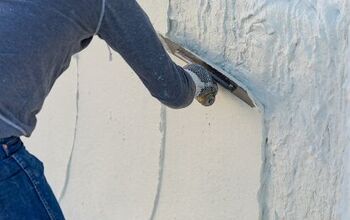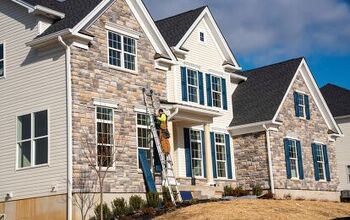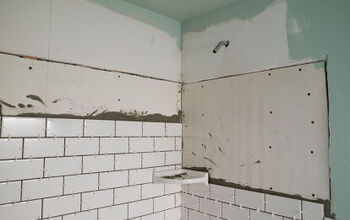Cement Plaster Vs. Gypsum Plaster: What Are The Major Differences?

Using the proper plaster for your walls or ceilings is crucial to making your home as structurally sound and comfortable as possible. There are plenty of different kinds of plaster available on the market today, but two are by far the most common and well-recognized: cement and gypsum.
Choosing between these two plasters can seem like a tough choice at first, especially since every home has different needs and requirements. However, knowing the basic differences between cement and plaster can help guide your plastering decisions and make the selection process incredibly simple.
Cement plaster is most often used for exterior walls since it’s highly resistant to the elements and moisture. It can also be used for interior walls if needed but it can take longer to set and cure, it’s vulnerable to mold, and has a very rough texture without punning. Alternatively, gypsum plaster is limited to interior walls and sets up quickly, has a smooth texture, and is low in thermal conductivity.
Knowing the different applications and properties of both cement and plaster will benefit your home improvement process, and save you from a future headache. Choosing the wrong plaster will structurally compromise your home, since walls and ceilings need to handle whatever is thrown at them over the years.
Providing your walls with the proper plastering it needs is a top priority when it comes to construction projects, and this article will settle your mind on which to choose and when.
Do You Need to Hire Drywall Installers?
Get free, zero-commitment quotes from pro contractors near you.

Benefits of Cement Plaster
There are plenty of reasons to use cement plaster for whatever projects you have planned for your home!
Protection Against the Elements
Cement is a balanced mix of 3 different ingredients: sand, water, and, obviously, cement. This combination makes it fairly strong against natural elements such as rainstorms, strong winds, and pollution. It’s not going to turn your outer walls into an indestructible fortress, but your walls will at least have a solid foundation and base protection to work with, which should be more than enough.
Moisture Resistant
Another plus cement plaster has is being able to handle various amounts of moisture. This can be useful for homes in a wide range of climates and locations, as it removes the worry of erosion or immediate water damage. Water causes all sorts of problems for gypsum plaster, but cement plaster is hardly phased by it.
Useful Inside And Out
Because of how resistant it is, cement can be used to plaster exterior and interior walls needing extra protection. It can help provide significant durability to whatever wall or area you deem necessary, no matter the location. You probably won’t use it everywhere, but the fact you can use it for both interior and exterior walls gives it great utility for all sorts of home projects.
Cement Plaster Drawbacks
Cement may be strong and vastly applicable in various situations, but it does still have quite a few disadvantages to keep in mind.
Rough Texture
Cement plaster is naturally dark-grey in color and fairly rough in texture. If you want to paint it or make it smoother, you’ll need to treat the walls with POP punning to get a softer surface. This will cost extra, and without punning, you won’t be able to paint over it.
Even if you’re fine with the poor texture, the dull color can be an eye-sore. This can be especially true if used indoors, limiting coloring options in the rooms you apply it, if you choose to avoid the punning process.
Time Consuming
Patience is required to work with cement plaster, as it takes quite a bit of preparation to get just right. In order to avoid potential cracks, water curing must take place before and after the cement is applied and set to the wall.
The post-curing, in particular, can take over a week to do properly. Mixing is also done on site, which continues to add more money and more time to the equation. This, on top of punning for smoothness, could make a project last far longer than you may be comfortable with.
Shrinking and Mold
Cement is prone to shrink over long periods of time, which can cause hairline cracks to pop up on the walls, another potential eye-sore. It can also be overtaken by mold or mildew if left unchecked. Cement plastering requires care to set up, and care to keep it clean and free of problems. Its strength is undeniable, but if you want your home to look its best, cement will make you work for it.
Weakness to Fire
Though cement can stand up to rain and storm, fire is a bit out of its reach. When exposed to fire, cement plaster ends up cracking, becoming brittle and very frail. It loses its strength and durability, and is unable to protect the bulwark underneath. The concrete and steel making up your wall will take serious damage in this case. Fire safety is incredibly important, so make sure you consider this in your initial planning for your walls.
Benefits of Gypsum Plaster
Cement plaster is extremely useful for construction, but Gypsum is still an important factor to consider for your interior plasterwork desires.
Smooth Texture
Gypsum plaster is a ready-made powder mixed with water. This makes it easily malleable over whatever surface you apply it to. No need to worry about curing or punning: the plaster does the work for you. It’s also really simple to make and is reusable for future projects down the line.
It’s actually very environmentally friendly, especially when compared to cement. Cement requires river sand, the market for which is becoming more and more convoluted and expensive. Gypsum, on the other hand, has very little difficulty being made and used.
Sets Quickly
While cement takes days to weeks to be able to properly set and smoothen, gypsum plaster sets extremely quickly. Since you don’t have to worry about adding extra steps, painting can start after only 72 hours. Simplicity is key to gypsum, and every step you can skip in the wall-plastering plan saves you lots of stress and time in the long run.
No Shrinking, No Mold
The more malleable nature of the gypsum plaster keeps it safe from shrinkage. It may not be good against the outer elements, but it makes up for this by being able to stand up to the passage of time.
Mold and mildew also find it much more difficult to grow on plaster. Obviously, since most people don’t like mold inside their homes, gypsum matches extremely well for covering inner walls and ceilings.
Low Thermal Conductivity
Keeping your home at the right temperature is at the top of many people’s priority list, and gypsum does wonders for your home temperature needs.
Gypsum plaster doesn’t transfer heat very quickly, preventing heat from escaping or moving through it. This means the plaster contains your home’s heat well during the winter and keeps the heat out during the summer. This also gives it a strong resistance to fire, protecting the bulwark of the walls or ceiling it’s placed on, which is another great safety quality to have in your home.
Gypsum Plaster Drawbacks
Don’t forget, however, there are downsides to consider before committing to Gypsum plaster for all your plastering needs.
Interior Only
The most glaring issue for using Gypsum plaster is how it can’t be used for exterior walls. It doesn’t protect against the elements nearly as well as cement plaster. This prevents gypsum from being as widely applicable as cement.
Regardless of all the many wonderful attributes gypsum has over cement, the fact its range of applicable locations is so limited ends up hindering it greatly.
Affected By Moisture
Despite being at its best in interiors, Gypsum plaster still can’t be applied anywhere that could accumulate water or moisture. Bathrooms and showers are out of the question, not to mention things like balconies, basements, or even kitchens. All these places have either running water or an open vulnerability to climate and humidity. Gypsum plastering simply can’t handle it.
Not As Durable
If you’re going to hang something up on the wall covered in gypsum plastering, make sure you’re careful. Since gypsum is softer than concrete plaster, it can break and crack if you drill or hammer into it carelessly. That’s not to say you can’t hang things or make holes in your wall if needed, but caution and care is required whenever you need to do so.
Do You Need to Hire Drywall Installers?
Get free, zero-commitment quotes from pro contractors near you.

Our Conclusion
Generally, you’ll be using cement plaster for exterior walls and gypsum plaster for interior walls. Of course, there will be times when you use cement for interior work, but it all depends on your situation. Both are often required to work in tandem with one another to give your walls strength and beauty in their given homes. Keep in mind, however, there are other plasters on the market that all have their own benefits and drawbacks to consider. But when it comes to the home, the combo of cement plaster and gypsum plaster can get the job done like no other.

Paige is an elementary school librarian with a passion for writing. Her hobbies include reading an exorbitant amount of fantasy, slowly teaching herself to draw, and home decor. While she isn't the most talented artist or interior designer, what she lacks in skill she more than makes up for in enthusiasm. When she's not curled up with a book, you can certainly find her curled over the keyboard.
More by Paige Hanawalt



























